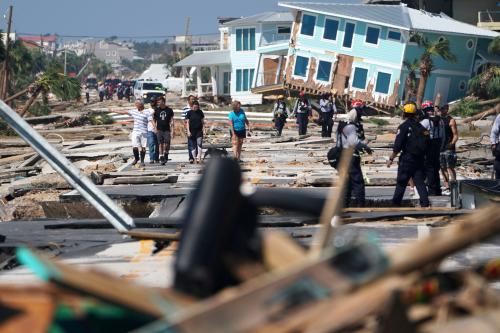In light of this week’s storm, one big question post-Sandy is what could have been done to prevent the devastating damage to the city of New York, its infrastructure, and its economy? Monday morning quarterbacking, for sure, but it’s the question on everyone’s mind now.
And for obvious reasons, that’s tough to answer. After all, what is the proper way to prepare for a once-in-a-century event? (Whether 100-year storms now happen every year is another, but related, discussion.)
In comments after the storm, New York Gov. Cuomo described a mix of traditional fixes and engineering solutions that might include barriers in the harbor or hatches at subway and tunnel entrances. This is understandable and rational, especially given the success of the rebuilt levees in New Orleans. Couple that with the fact that even an audacious investment of several billion dollars now could prevent a disaster with a price tag of tens of billions, and walls around Manhattan don’t seem like such a bad idea.
But it is also important to point out that it’s not as if the city is inert when it comes to disaster preparedness and response. In particular, New York has a coastal storm plan that recognizes the huge coastline of the city and its susceptibility (on par with places in Florida and Gulf Coast.) Even though most of the focus is on disaster response, the city’s Natural Hazard Mitigation Plan maps out a range of existing actions and prevention measures.
Here post-Sandy, however, we see it wasn’t enough. Despite laudable efforts, the city’s mass transit system is crippled, airports are shutdown, hospitals evacuated, and the power grid is dark.
So instead of wondering what could have done differently, the question should be: What now? We’ve seen direct, if uneven, responses to disasters: terrorism prevention in the wake of 9/11, seismic retrofits after earthquake damages in California, New Orleans rebuilt after Katrina, and well as neutered initiatives such as the one to rebuild and rehabilitate bridges after the devastating collapse in Minneapolis in 2007.
The degree of reaction to Sandy will depend on a lot of things, not the least of which are ongoing budget challenges in New York City and state, coupled with a federal government rethinking its role in an age of fiscal constraint.
But part of the wake-up call from Sandy will be just how important the city’s transportation infrastructure is to its economy–mass transit, tunnels/bridges, airports–and the impact when it’s disabled.



Commentary
The Big Infrastructure Question Posed by Sandy
October 31, 2012